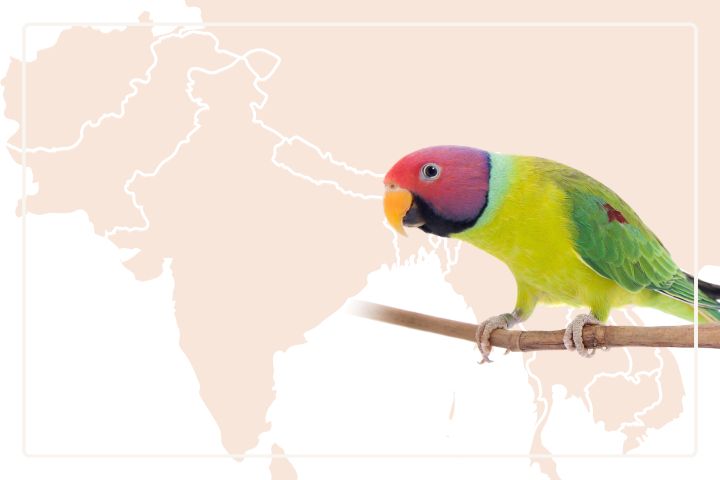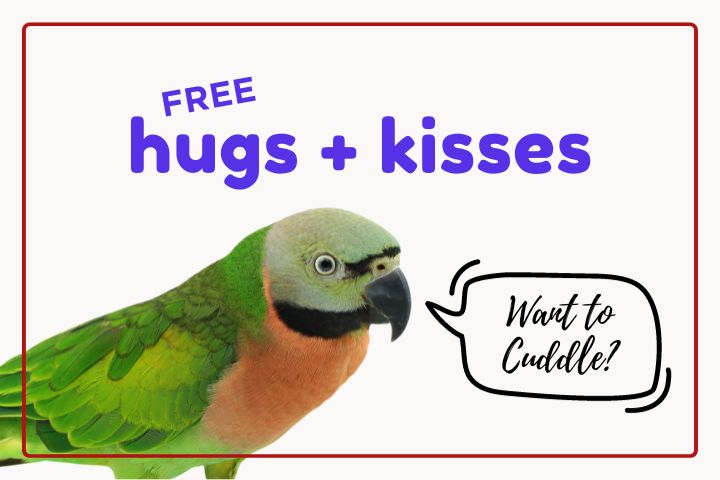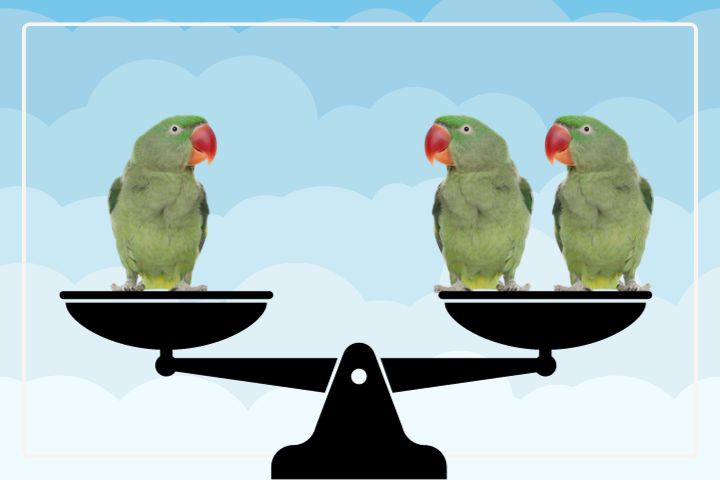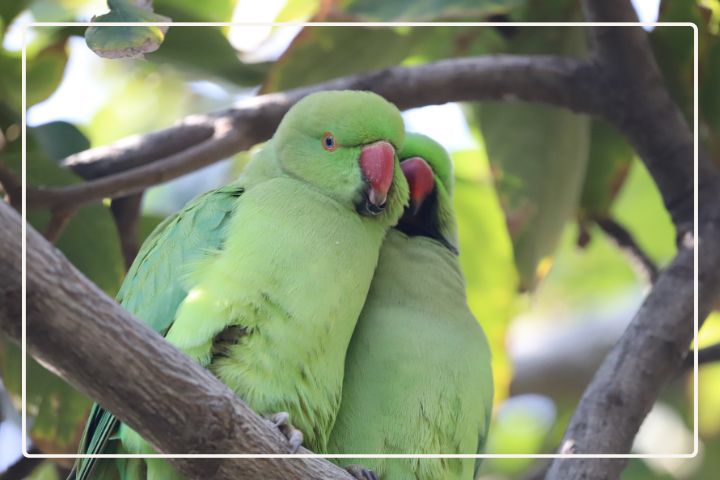Where Do Plum Head Parrots Come From?
If you’re considering adopting one of these birds, you may be wondering where they come from.
Plum Head Parrots are native to the Indian subcontinent, including India, Sri Lanka, Pakistan, Bangladesh, Nepal, and Bhutan. They are mostly found in wooded plains, forest edges, and other semi-open habitats, where they make their homes in trees. However, they are also considered agricultural pests in some regions.
If you’re interested in learning more about these fascinating birds, read on to discover more about their origins and natural habitat.
Habitat and Environment
Plum Head Parrots (Psittacula cyanocephala), also known as Plum Headed Parakeets or simply PlumHeads, have a preference for residing in areas abundant with trees and plants. Plum Heads are active and agile birds that can navigate through dense forests with ease.
They often make their homes in woodlots near farms and can be considered agricultural nuisances in certain regions. Nonetheless, these parrots also contribute in seed dispersal and the process of pollination.
Additionally, Plum Headed Parrots have been observed in high-altitude forests in the Himalayas. This shows their ability to adapt to different types of habitats, ranging from tropical to temperate regions.
In terms of nesting, these parrots typically build their nests in tree cavities. Both the male and female birds contribute to the construction of the nest and take turns incubating the eggs.
Unfortunately, the decline in the population of PlumHeads is mainly due to the loss of their natural habitats. Deforestation destroys their forest homes, leaving them unable to find suitable nesting cavities or adequate food supply. Logging activities also contribute to habitat fragmentation, further reducing the chances of survival for these parrots.
The expansion of urban areas not only directly destroys their habitats but also creates more human-wildlife conflicts. PlumHeads may be forced to compete with humans for dwindling resources and face increased risks of predation and accidents in urban environments.
The pet trade also poses a significant threat to the Plum Headed Parrots’ population. They are sought after for their vibrant plumage and ability to mimic human speech. The capture and trade of these parrots disrupts their natural population. Additionally, it can also lead to unsustainable harvesting practices and illegal activities.
Diet in the Wild
Plum-headed parakeets are mainly herbivores in the wild, feeding on fruit, seeds, buds, and flowers. They are known to be particularly fond of figs and other fruiting trees. PlumHeads also feed on cultivated crops, including maize, sorghum, and millet. Due to this, it can make them pests in some areas.
These birds have a strong beak that is well-suited for cracking open seeds and nuts. They also have a long tongue that they use to extract nectar from flowers. In addition to their herbivorous diet, they have been observed eating insects and small invertebrates on occasion.
Plum-headed parakeets are quite social and often feed in large flocks. They are known to forage for food on the ground as well as in trees and bushes. When feeding, they may use their beak to hold onto a branch or piece of fruit while using their feet to steady themselves.
Read Next: Can Plum Headed Parakeets Talk?
Conservation
Plum-headed parrots are not considered endangered, but they are listed as near threatened due to habitat loss and trapping for the pet trade. In India, they are protected under the Wildlife Protection Act of 1972. Captive breeding programs have been established to reduce the demand for wild-caught birds.
If you are considering getting a plum-headed parrot as a pet, it is important to ensure that it was bred in captivity and not taken from the wild. Wild-caught birds can suffer from stress, disease, and trauma during capture and transport, and their removal from the wild can have negative impacts on wild populations.
In supporting captive breeding programs, you can help conserve plum-headed parrots. Alternatively, you can avoiding product that contribute to deforestation, such as palm oil. By taking these steps, you can help ensure that these beautiful birds continue to thrive in the wild.
Conservation efforts are crucial to protect and restore the habitats of Plum Headed Parrots. Governments, organizations, and individuals need to prioritize forest conservation, implement sustainable logging practices, and create protected areas for these parrots. Additionally, awareness campaigns are needed to educate people about the importance of not supporting the illegal pet trade and providing alternative options for those interested in owning a pet bird.
Collaboration between different stakeholders, including local communities, researchers, and policymakers, is vital for the long-term survival of Plum Headed Parrots. Only through concerted efforts can we ensure the preservation of their habitats and prevent further population decline.
Conclusion
The plum-headed parakeet is a fascinating bird species that is native to the Indian subcontinent. This medium-sized parrot is less aggressive and possessive than some other parrot species, making it a good pet for those who want a bird that is less demanding of an owner’s time.
The plum-headed parakeet is a social bird that needs regular interaction to remain socialized. It is capable of living in an aviary with other species that do not compete with it, such as finches. If you are considering bringing a plum-headed parakeet into your home, it is important to provide it with a spacious cage, plenty of toys, and a varied diet that includes fresh fruits, vegetables, and seeds.
Remember that owning a pet bird is a long-term commitment, and it is important to provide your bird with the care and attention it needs to thrive. With proper care and attention, your plum-headed parakeet can be a loyal and entertaining companion for many years to come.







I truly appreciate this post. I’ve been looking all over for this! Thank goodness I found it on Bing. You have made my day! Thank you again!